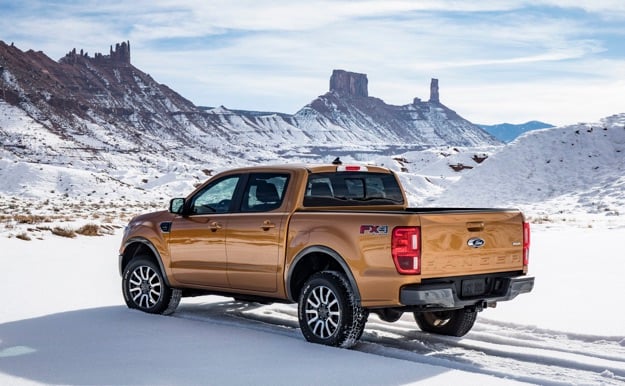Ford Ranger Makes Triumphant Return With 2.3 EcoBoost Engine From Focus RS And Mustang
Needless to say, Americans can't get enough of trucks, and Ford is looking to fatten its coffers with a new entry. Or perhaps we should say that Ford is resurrecting a beloved nameplate that earlier this decade: Ranger. This new U.S. market 2019 Ford Ranger is largely a "massaged" version of the truck that has been available in the rest of the world for the past six years. However, its fully-boxed ladder frame, exterior styling, and package options have been redesigned to specifically suit the American market.
The vehicle will be available in both SuperCab and SuperCrew body styles in XL, XLT and Lariat trim levels. There will also be Chrome and Sport appearance packages, along with the FX Off-Road package. Interestingly, the new Ranger will be available in just a single engine/powertrain combination, which is quite odd for a pickup truck. In this case, the sole engine that will be offered is the 2.3-liter EcoBoost four-cylinder engine, which can only be paired with a 10-speed automatic transmission. If you were hoping for a V6 engine, you'll have to look elsewhere.
“Ranger’s proven 2.3-liter EcoBoost provides a torque target on par with competing V6 engines, but with the efficiency of a four-cylinder,” said Hau Thai-Tang, Ford executive vice president, Product Development and Purchasing. “When you pair that with its 10-speed transmission, you’ve got one of the most versatile, powerful and efficient powertrains in the segment.”
If the engine sounds familiar, it's because it's a modified version of the same engine used in the Ford Mustang and the Focus RS hot hatch. In the Mustang, the engine produces 310hp and 320 lb-ft of torque. In the Focus RS, the engine produces 350hp and 350 lb-ft of torque. However, in Ranger guise, we expect the horsepower and torque numbers to be closer in line with that of the optional 3.5- and 3.6-liter V6 engines of its competitors. So, expect to see around 280hp and 280+ lb-ft of torque.
On the inside, you'll find a modern cockpit (and a significant upgrade from what was available in the last Ranger) complete with Ford's Sync 3 infotainment system. Customers can opt for a 3.8-, 4-, or 8-inch touch screen depending on trim level, while you'll find Android Auto and CarPlay integration as well. For an added kicker, there's also support for Amazon Alexa. Optional features include B&O PLAY premium audio and the FordPass Connect 4G LTE hotspot (which can support up to 10 wireless devices).
On the safety front, Rangers (XLT and Lariat) will come standard with Auto Emergency Braking, Lane Keeping Assist, Lane Departure Waring, Reverse Sensing System and the Blind Spot Information System. The Lariat will also be available with optional Pedestrian Detection and Adaptive Cruise Control.
“Ranger has always held a special place in the hearts of truck fans,” added Thai-Tang. “The all-new Ranger is designed for today’s midsize truck buyer, delivering even more utility, capability and technology for those who blend city living with more off-the-grid adventures on weekends.”
The Ford Ranger went of production in the U.S. back in 2011 for a number of reasons. First of all, the platform that the vehicle sat on was only modestly updated over the course of two decades. It was completely outmatched (as a compact pickup) compared to its newer, mid-size competition. In addition, there was only so much that Ford could do when it came to outfitting the truck with enough tech to meet more stringent safety and emissions standards. In addition, Ford thought guessed that most truck buyers would just spend a few thousand dollars more and step into a larger F-150.
Over the past decade, however, mid-sized trucks like the Toyota Tacoma, Nissan Frontier, Chevrolet Colorado and GMC Canyon have proved to be strong sellers, and Ford was left on the sidelines. While these mid-size trucks can overlap their full-size counterparts in pricing, some people just prefer the smaller dimensions, better maneuverability, and lower starting price in base trim levels.
Unfortunately for those that would like to get their hands on the 2019 Ranger, it will not go on sale until Q1 2019. Pricing will be announced closer to launch date.





